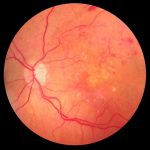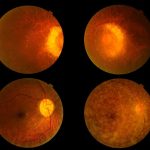January is Glaucoma Awareness Month, which encourages us to start the year thinking about our precious sense of vision and how to safeguard it.
Glaucoma is a thief – a silent “sight thief” associated with gradual and permanent vision loss caused by damage to the optic nerve. It is one of the leading causes of blindness worldwide.
Over 3 million people in the United States have glaucoma. That number, according to the National Eye Institute, is expected to increase to 4.2 million by the year 2030.
The World Health Organization says that more than 2 million people are blind due to glaucoma worldwide (about 120,000 of those are in the U.S.) and that 80 million people worldwide currently have glaucoma. Many of those individuals are unaware of their condition because glaucoma steals vision so gradually, over time. A person can lose as much as 40% of their vision without noticing a change! Due to our aging population, lack of awareness of symptoms, and failure to get regular eye exams, an epidemic of glaucoma-mediated blindness is a real possibility.
What is Glaucoma?
Glaucoma is a group of eye conditions that cause injury to the optic nerve due to high intra-ocular pressure (the pressure inside of the eye). The fluid that moves through the eye can become blocked off, causing a strain on the optic nerve. The optic nerve is unable to send the appropriate messages to the brain, causing vision to blur or get darker, typically starting with peripheral vision. As the condition progresses, the optic nerve deteriorates, and blind spots occur. Most forms of glaucoma are seen in middle-aged and elderly individuals.
Who is at risk for Glaucoma?
Those at highest risk include:
- Age 55 and over
- Black, Asian or Hispanic
- Family history of glaucoma
- Medical conditions including diabetes, migraines, high blood pressure and sickle cell anemia
- High intra-ocular pressure
- Corneas that are thin in the center
- Extreme farsightedness or nearsightedness
- Eye injuries or specific types of eye surgery
- Extended use of corticosteroid medications, especially eye drops
- Siblings of persons diagnosed with glaucoma
The Two Types of Primary Glaucoma
- Open-angle glaucoma: The most common form of glaucoma, it is caused by a blockage in the porous tissue around the eye. The primary drainage angle in the eye remains open but is unable to drain the fluid due to the blockage, and therefore the fluid build-up exerts pressure on the optic nerve. The only way to know if you have this type of glaucoma is by examination during your regular eye exam, which can be pivotal in saving your eyesight and preventing total vision loss.
Symptoms:
- No symptoms in early stages
- Patchy blind spots in peripheral vision or side vision
- Central vision affected in later stages
- Angle-closure glaucoma: This type of glaucoma is rarer and happens suddenly when the iris bulges, blocking or partially cutting off the drainage angle between the cornea and iris. It is a medical emergency that requires immediate attention.
Symptoms:
- Severe headache
- Severe eye pain
- Nausea or vomiting
- Blurred vision
- Halos or colored rings around lights
- Eye redness
How to Manage Glaucoma
Detecting and managing glaucoma in its early stages may help slow its progression and prevent total vision loss. While there is no cure, glaucoma is highly treatable.
Here are some important points to remember.
- Regular comprehensive eye examinations are the key. If you are 55 years old or over, be sure to see your optometrist at least once a year. If you are an at-risk patient with a family history, you may need screenings more frequently. Ask your optometrist how often you should be screened.
- Be aware of your family’s eye health history. Glaucoma can be seen in families from generation to generation. While glaucoma can be hereditary, many people without a family history of the condition are diagnosed every year. Keep in mind: It’s possible that a family member had the condition but was undiagnosed.
- Wear eye protection. Always wear eye protection when participating in sports or using power machinery or tools. Serious eye injuries can lead to glaucoma.
- If you’ve been diagnosed with glaucoma, use your prescription eye drops regularly. These drops can significantly reduce the progress of intraocular eye pressure that causes glaucoma. Even if you have no symptoms, continue to use the drops as prescribed by your optometrist.
There is no cure for glaucoma, but comprehensive eye exams can identify your risks, and early intervention can prevent progressive damage to the optic nerve. The earlier glaucoma is diagnosed, the sooner you can begin a treatment plan to save your sight.
Call our office today to schedule a comprehensive eye exam. Knowledge is power: Know your risks and be proactive in protecting your eyesight.






